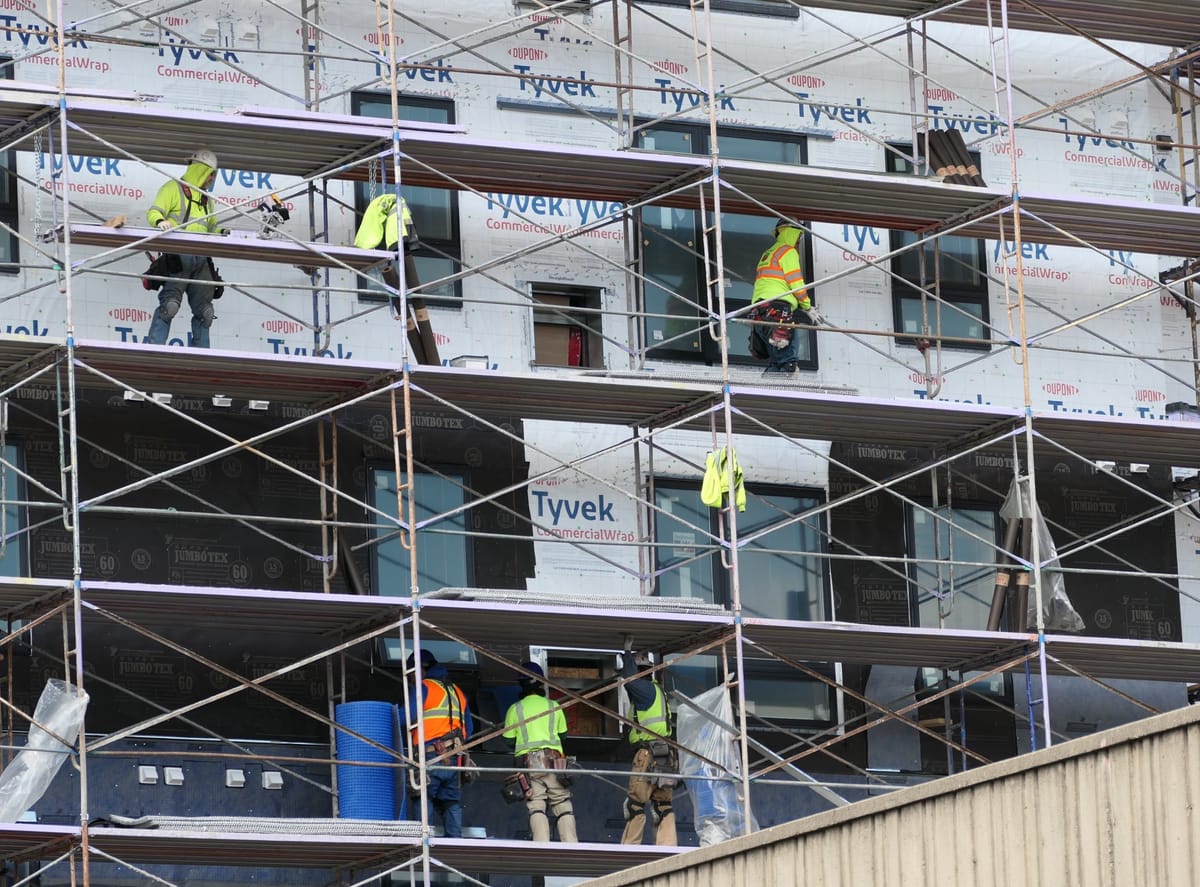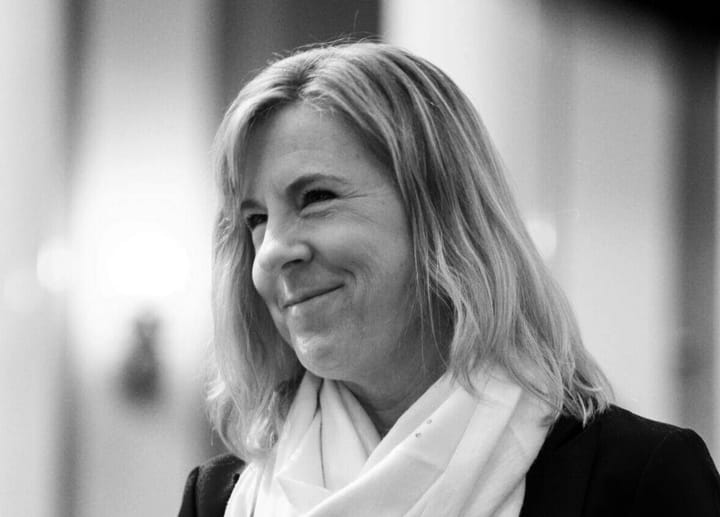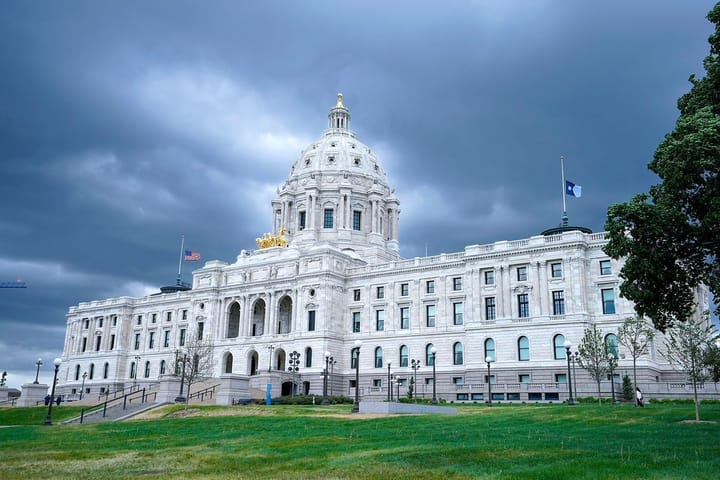How Minnesota will spend $1 billion on housing
Lawmakers also directed tens of millions of dollars more toward homelessness prevention and housing stability initiatives, which include rental assistance.

By Max Nesterak, Minnesota Reformer
Minnesota lawmakers increased the state’s spending on housing about ninefold over the next two years, mostly with one-time funding paid for with part of the $17.5 billion surplus. The $1 billion in new funding (HF2335) will help developers build more affordable apartments, help low- and moderate-income Minnesotans buy their first homes, and provide rental assistance to thousands of households.
Lawmakers also created the first dedicated funding source for housing through a new quarter-cent sales tax in the seven-county Twin Cities metropolitan area. That tax is estimated to raise about $300 million over the next two years, with the majority going directly to metro area cities and counties to help fund affordable housing development and homelessness prevention initiatives.
New funding for rental assistance
Around 5,000 more low-income households in Minnesota will receive help paying rent through a new statewide assistance program called “Bring it Home.” The program is modeled on the federal housing choice voucher program — often referred to as Section 8 — which only provides assistance to about a quarter of eligible households. The state voucher program is estimated to increase the number of families that receive housing vouchers by 12%, according to Beacon Interfaith, an affordable housing nonprofit.
Households that receive the assistance will pay a portion of their rent — up to 30% of their income — with the state covering the rest. Only households earning 50% of the area median income or less will be eligible. That’s about $62,000 for a family of four in the metro area. About 3,500 vouchers will go to metro area renters, paid for with part of the new quarter-cent sales metro area sales tax.
About 1,500 will go to households in greater Minnesota, with $46 million budgeted over the next two years.
Progressive Democrats and affordable housing developers hope the state will be the first in the country to provide assistance to every low-income family paying more than 30% of their income on rent, aka “cost burdened.” More than 260,000 Minnesota households — 43% of renter households — were estimated to be cost-burdened in 2021, according to the Minnesota Housing Partnership, an affordable housing advocacy group.
A universal rental assistance program would cost an estimated $2 billion per year — more than 5% of the state budget and four times as much as was allocated for all housing initiatives in the housing bill passed by lawmakers.
Homelessness prevention and housing stability
Lawmakers also directed tens of millions of dollars more toward homelessness prevention and housing stability initiatives, which include rental assistance. The state will spend:
$65 million over two years on family homelessness prevention, which funds up to 24 months of rental assistance, along with outreach efforts to connect homeless people with services. That funding is in addition to the $50 million lawmakers approved earlier in the session.$23.3 million over two years for the Minnesota Housing Trust Fund, which Minnesota Housing may use for rental vouchers.$10.7 million over two years on rental assistance for people with mental illness.$5.5 million over two years for “Homework Starts with Home,” which addresses and prevents youth homelessness. More than 8,000 students in the state’s public and charter schools experience homelessness each year, according to the Minnesota Department of Education.$25 million over two years for supportive housing, which helps people who are homeless or have experienced homelessness maintain stable housing and pursue employment or educational opportunities.$3 million over two years for housing mediation services to resolve landlord-tenant disputes outside of the courtroom.
$350 million for new affordable housing
The housing budget bill directs more than $350 million for building new affordable housing across the state. Most will go toward new affordable rental properties, but some may be used for manufactured housing and single-family homes. The state often sells housing infrastructure bonds to subsidize new construction, but with the large surplus and a lack of support from Republicans, Democrats instead will use cash to spur development.
While the funding is appropriated for the next two years, it may be spent over a longer time period since the ongoing labor shortage will likely delay development. Non-profit, for-profit, and tribal developers may apply for funds, and projects will be selected by Minnesota Housing.
Subsidize preservation of existing affordable housing
In addition to funding new housing development, the state will spend millions more to rehabilitate and preserve existing affordable housing, including:
More than $100 million over two years to provide grants to help owners of affordable apartment buildings rehabilitate and maintain their rental units.$15 million for public housing rehabilitation. (The capital investment bill also included $72 million for public housing.)$5.5 million for loans to low- and moderate-income homeowners for renovations to improve the accessibility, energy efficiency or the health and safety of their homes.
$200 million in down payment assistance
Minnesota lawmakers have historically focused on funding new affordable rental properties, but the housing budget bill includes significant funding to increase homeownership opportunities for first-time buyers and people of color. Minnesota has among the widest disparities in homeownership between white and Black people.
The state will direct $200 million to help low- and moderate-income Minnesotans buy homes, with $150 million of the funding earmarked for first-generation homebuyers. First-generation buyers earning up to 115% of the area median income will receive up to 10% of the purchase price of a home, which they will have to repay only if they move out or sell the property within the loan period.
In the tax and housing bills, the state has also directed more than $100 million to help build new affordable homes through programs like Habitat for Humanity.
Help for manufactured home parks
The housing budget bill provides $10 million to help manufactured home residents purchase the park and turn them into cooperatives and $10 million to help people buy and repair manufactured homes. The state will also spend $17 million on lending grants to help park owners to make infrastructure improvements, such as building or maintaining storm shelters and community facilities.
Minnesota Reformer is part of States Newsroom, a network of news bureaus supported by grants and a coalition of donors as a 501c(3) public charity. Minnesota Reformer maintains editorial independence. Contact Editor Patrick Coolican for questions: info@minnesotareformer.com. Follow Minnesota Reformer on Facebook and Twitter.



Comments ()